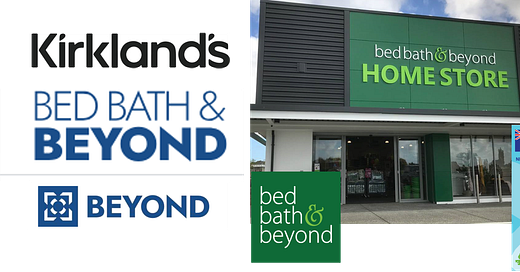Kirkland's Is Rebranding And Opening Up To 75 Small Format Bed Bath & Beyond Stores; Similarly Sized Bed Bath & Beyond Stores Have Operated In New Zealand For Decades
The new small format Bed Bath & Beyond stores in the U.S. will be similar in size to the 57 Bed Bath & Beyond stores in New Zealand that are operated by an unaffiliated company with the same name
On an earnings call a couple of years back, Beyond Inc. Executive Chairman Marcus Lemonis commented that many people ask him:
"Is Bed Bath & Beyond going to have stores again?"
Last Fall the answer to that question became “yes.”
Beyond Inc.’s BYON 0.00%↑ partner Kirkland’s KIRK 0.00%↑ announced plans to rebrand one of its Nashville-area stores as a small format Bed Bath & Beyond Home store.
Last week Kirkland’s announced that even more rebranded stores are on the way.
Kirkland’s plans to open another 5 small format Bed Bath & Beyond Home stores in the coming months and up to 75 more by the end of 2026.
But these new stores will not mark a return to Bed Bath & Beyond’s former Big Box store format.
The rebranded former Kirkland’s stores will be just 7,000-10,000 square feet.
And similar in size to the Bed Bath & Beyond stores that have operated for decades in New Zealand.
Bed Bath & Beyond Ltd NZ has 57 stores in New Zealand and has been operating in the country since 1995.
But it is not—and never has been—affiliated with the bankrupt former U.S. company or Beyond Inc. which now owns the Bed Bath & Beyond brand.
Bed Bath & Beyond NZ was originally named Linen for Less but re-branded as Bed Bath & Beyond—which had not been trademarked in New Zealand—in part to benefit from the marketing of the unaffiliated U.S. company.
Leveraging the brand equity of U.S. retailers has actually been a common strategy for companies in Australia and New Zealand where retailers like Kmart and Woolworths have thrived despite the failure of their U.S. counterparts.
Even though the U.S. Bed Bath & Beyond and its New Zealand counterpart share a brand name, however, there had been differences between the two companies.
Bed Bath & Beyond NZ has always operated smaller stores (as compared to the U.S. chain’s previous Big Box sites) and it primarily sells sheets, towels and pillows unlike the U.S. chain's previous focus on kitchen appliances and housewares.
Additionally, Bed Bath & Beyond NZ's lower case, green and white color scheme is a sharp contrast to the bold, blue logo that had been used by the U.S. company.
The new Bed Bath & Beyond Home stores in the U.S. may also more closely resemble the New Zealand stores not only in size but also in their merchandising strategy.
Plus the new U.S. stores and increased marketing spend by the U.S. company may provide positive spillover effects for Bed Bath & Beyond NZ.
Which may be of benefit to the New Zealand company since it lost its own trademark battle a couple of years ago against a competing Australian chain — Bed Bath N’ Table — that had entered the New Zealand market.
Bed Bath & Beyond NZ had accused Bed Bath 'N' Table of infringing on its trademarks and intellectual property and creating confusion amongst its customers, as the two chains not only are closely linked in their names but also sell many of the same products and even sport similar green color and font in their branding and logos.
But in July 2023 the New Zealand High Court threw out Bed Bath NZ's claims of trademark violations against Bed Bath 'N' Table.
The court noted the concurrent use of the two marks was unlikely to cause substantial confusion in New Zealand.
A decision that may be of interest to Kirkland’s and Beyond Inc. if they consider or pursue future international licensing opportunities of the brand in New Zealand.







